The rule of thumb is to buy new tires for car every 6 years, after every 40,000 miles, or when the tire is damaged beyond repair. The operable age of any tire can be shorter or longer, depending on your driving style, climate, and tire maintenance provided. Regardless, no tire should be used if it’s 10 years old or more.
Factors Influencing How Often You Should Buy New Tires for Car
Tire Aging
The age of the tire you use is vital, as the material degrades with time. The rubber loses its elasticity, cracks, and separates from the steel cords, which can cause dramatic consequences. The aging process depends on:
- The type of tire
- Road texture
- Exposure to UV light, atmospheric compounds
- Frequency of use
- Quality of maintenance.
It’s important to understand that the main factor that makes rubber age is oxidation. Sooner or later, it will make rubber too dry and unstable to be used.
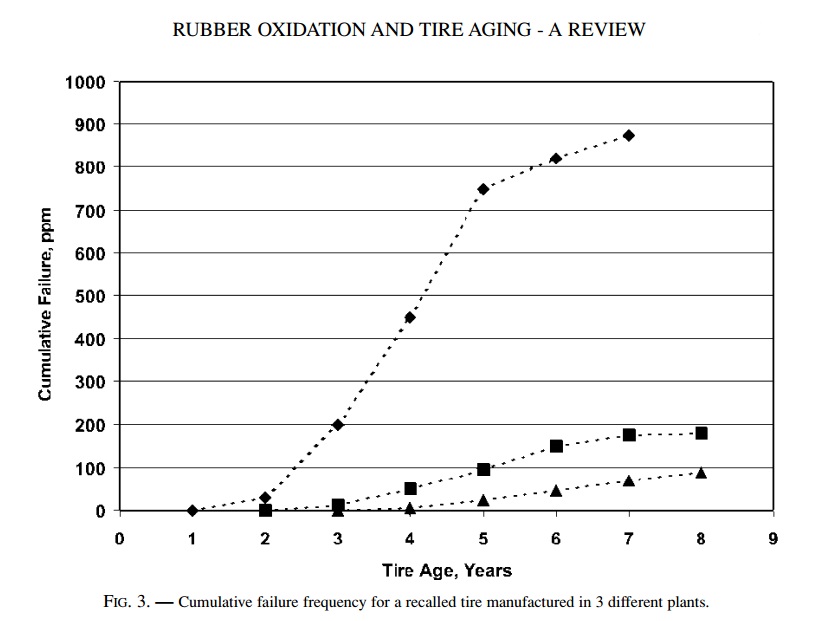
The Type of Tire
Different types of tires will provide you with different durability. Off-road tires have stiffer sidewalls and are made from hard rubber, so they will provide a rather rough and noisy ride, but last longer. Whereas, high-performance and sports tires are made from softer rubber, so they will provide a high-quality ride but lower life expectancy.
When you buy new tires for car and start using them, the rubber wears off by leaving some of the heavy particles on the road and some of the lighter in the air. Therefore, soft material will disappear faster, sacrificing itself to provide you with a good grip.
UV and Atmosphere
Due to excessive exposure to the sun, rubber is affected by photo degradation. All tires contain rubber compounds, and no matter whether they are natural or synthetic, polymers in them absorb UV radiation. Therefore, in hotter states, it’s recommended to check tires frequently once they reach the age of 4.
The “man-made” or tropospheric ozone is also destructive to rubber, making drivers buy new tires for car more often. Its impact was firstly noticed in the 1950s, as tires were deteriorating faster in Los Angeles than in smaller cities. The reason turned out to be the tropospheric ozone that is merged, due to emissions from burning gasoline and coal.
Frequency of Use
Frequently used tires are less prone to aging as the pressure and motion make the oil move within the tire. While it circulates, the internal rubber is lubricated by the oil, preventing drying and cracking.
Quality of Maintenance
Mandatory maintenance procedures to be done:
- Tire balancing.
Balance your tires after every impact, tire change, or tire rotation, if you want to buy new tires for car less often. This is done to achieve even load distribution, as well as for uneven wear prevention.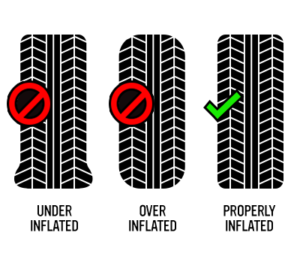
Image source: http://blog.firestonecompleteautocare.com/ - Proper inflation.
Check inflation monthly, as air always escapes the tire to some extent. Plus, when you’re driving, air heats and expands, and if the tire is overinflated, you may see first dry cracks earlier. Proper inflation will also help prevent uneven and premature wear, which reduces tire life. - Cleaning procedures.
Cleaning procedures are crucial for slowing the aging process, as salt, dust, and lack of moisture, can make the rubber deteriorate faster.
Mileage
According to Jeff Allen from The Car Chasers, average tires are designed to be driven for 50-60,000 miles (if not specialized), but they often don’t reach the maximum. It’s important to understand that the estimated mileage mentioned when you buy new tires for car may differ from the actual distance you will get.
The mileage of a tire depends on:
- The type of tire and vehicle
- Driving style
- Load and speed limits
- Tire rotation
- The speed the tire is driven at.
Tire industry has improved significantly: in the 1970s, tires could last for 20,000 miles, and now some of the highly durable ones can last 80-100,000 miles.
The Combination of Tire and Vehicle Types
Different cars need different types of tires. If you have a sports car, ordinary all-season tires won’t provide you with the type of ride you need. And vice versa, a regular car with a considerable load won’t work for a long time with sports tires – they will wear within several thousand miles.
Before you buy new tires for car, note the type of your vehicle and its purpose. If you have a sports car or sedan, you may aim for high speeds and seek good steering and grip. If you have a SUV or a pickup truck, you may need to go off the road, so you need durability and traction.
Driving Style
Features of one’s driving style that may accelerate rubber deterioration:
- Heavy car overload for long rides
- Exceeding maximum speed rating of the tires
- Hard cornering, braking, or acceleration
- Frequent potholes and bumps taken at high speeds.
The rougher your driving habits are, the faster rubber scrubs off your tires. This usually takes at least 10,000 miles from each, making you buy new tires for car more often.
Load and Speed Limits
Overloading your car and driving at exceedingly high speeds can cause an irreparable damage or even an accident. The reason is that overloading or/and too high speeds make the tire exceed the maximum temperature it can withstand, which may cause tire failure.
Tire Rotation
Tire rotation will help you distribute the load and wear evenly on all tires, preventing the need to buy new tires for your car too early. Moreover, if your used spare tire is of the same qualities as the main set, it’s recommended that you rotate all five. Thus, your estimated mileage of 40,000 will turn into at least 50,000, due to one more tire.
Driving Speed
When vehicles are driven at high speeds, the tires heat up more than normally, which increases the tire wear. Jumping from 55 mph to 75 mph can cause the mileage to decrease by 20% or more. Going gradually won’t help either; tires that would provide you with the tread life of 250,000 miles at 55 mph will have only 237,500 miles at 60 mph. 70 mph will reduce tire mileage to 212,500 miles, going to 200,000 at 75 mph.
Things You Can Do to Increase Tire Lifespan
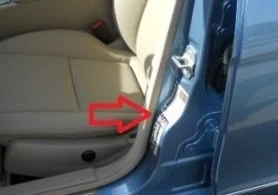
To get the most out of your tires, you need to maintain them properly.
- Checking tire pressure.
Check tire inflation of cool tires every 3,000 miles or every month, and before long trips. You can do it with a pressure gauge or a built-in tire pressure monitoring system that is required in all US vehicles manufactured after Sept. 1, 2007. For the appropriate inflation rate, read the manufacturer’s manual or tire information placard. It can improve the efficiency of fuel usage by up to 3%. It also prevents uneven treadwear – a major factor as to why you may have to buy new tires for car.Remember that the inflation has to be done when tires are cool, and the rate doesn’t have to go to the maximum standard. The reason is that the air is heating and expanding when you drive, so inflating to maximum can cause over-inflation. - Rotating the tires.
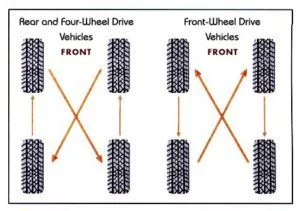
Tire rotation patterns. Image source: https://one.nhtsa.gov/ Rotate your tires every 5,000-8,000 miles to help the tread wear evenly. Inspect the tires for any unusual damage when rotating, to ensure they are in good condition.Remember that if you have directional tires, no rear-front rotation should be done, or the performance of the vehicle can deteriorate.
- Balancing the tires.
may affect the quality of riding and cause uneven wear, making you buy new tires earlier. Neglecting to balance tires in time can also cause tire blowout, excess fuel use, etc. Before getting your vehicle to a professional examination, check whether the tire is out of balance by:- Looking if there’s any imbalance in sight
- Going for a quick straight ride, and feeling whether there is an unusual tilt
- Checking the treadwear – if the tire is out of balance, you will notice uneven wear.
- Not allowing excessive UV and ozone exposure.
Weather can damage the rubber, it loses the elasticity needed to hold on to the wheel and perform its functions. So, it’s recommended to store vehicles somewhere with limited or no sun and ozone exposure. There are special climate-controlled garages that help decrease the factors that make drivers buy new tires too often. - Washing the tires.
It’s important that you clean your wheels and tires properly, using the right products and brushes. Simple rules like changing the water you wash and rinse the tire with, and clea ning the brushes after every washing round, work perfectly. Some also recommend avoiding special protectors, as they may remove the needed oil from the rubber, thus decreasing the tire lifespan. This can make it dry faster, so usual soap and water can be sufficient if the tires are otherwise maintained right.
Warning Signs That It’s Time to Buy New Tires for Car
Aside from rubber aging, consider getting new tires if:
- The tread, bead, or sidewall is damaged
- The tire reaches the legal minimum of tread depth
- There’s unusual vibration during driving.
Tire Damages
There are damages that may make the tire inoperable:
- Cuts, punctures, or bulges on the tire’s surface.
This damage usually appears after impacts and can cause both external and internal issues. They appear due to bad roads, aggressive driving, impacts, etc. Cuts usually present external damage, and even a small cut can result in a serious issue. Impact breaks/bulges indicate internal damages, which can cause tire failure. Punctures appear due to sharp objects penetrating the rubber, causing air pressure loss. -
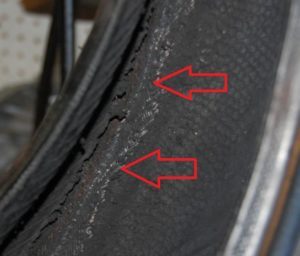
Flat tire damage Flat tire damage.
A tire can deflate slowly or rapidly, depending on the type of damage that caused it. Regular air pressure checks are necessary to make sure there’s no considerable air loss and no need to buy new tires for car yet. When a tire deflates fully, the wheel lowers down and rides on the tread, causing irreparable damage to the sidewall. - Cracks from dryness.
Cracks appear from age, as the rubber deteriorates and loses its flexibility. The material dries and hardens, becoming dangerous to drive on. Sooner or later, such cracks become wider and can cause tread separation and other issues, which will make you need to buy new tires for car. - Uneven wear.
There are different types of uneven wear:- One-shoulder.
This is usually a sign of wheel misalignment, as it’s tilted to one side, putting more pressure on one of the shoulders. - Two-shoulder.
This type of wear usually means the tire is underinflated. The outer parts of the tread contact the road too much and scrub off prematurely. - Center.
Excessive wear in the center of the tread is a consequence of over-inflation. The center part contacts the surface too much, while outer parts don’t get hardly any pressure from the road. -
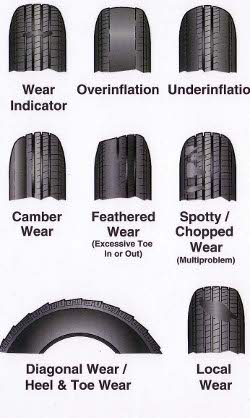
Types of tire wear. Image source: http://www.eastcoastalloys.com/ Feathering.
Feathering is a type of wear where the ribs of the tread get sharp on one edge and round on another. It’s easy to spot by running your hand all the way through the tread. The most common reason for feathering is a wrong toe-in setting. - Cupping.
This appears on one side of the tread, usually because of bent suspension parts. Any of the parts can cause the problem, so it’s recommended to check the whole system. - Second-rib.
This type of wear usually appears on radial tires, and many manufacturers consider minor wear in those places normal. However, if the tire isn’t properly inflated, second-rib wear can become an issue.
- One-shoulder.
If you notice any of these, buy new tires for car as soon as possible, as such damages can cause sidewall blowout, tread or cord separation, etc. They often result in steering loss and accidents, which can total other tires and the vehicle, not to mention they can hurt the driver and passengers.
Tread Depth
The legal minimum for tire tread is 2/32’’, but minor steering difficulties on wet roads can be noticed when there’s 4/32’’ tread left. If the tire isn’t replaced in time, the traction with the road becomes worse and it’s easy to lose control of the vehicle.
When you buy new tires for car, they have about 9-11/32’’of protective tread on them, which is put there to improve traction by diverting water from underneath. For a perfectly dry road, tire tread may seem an obstacle, as it reduces the contact patch area. The latter is the part of the tire’s surface that actually contacts the road, and it’s usually about an average palm-width. Nevertheless, tread is fully responsible for steering, turning, and braking on even slightly wet surfaces.
Consider purchasing a pair or a whole set when it’s time to buy new tires for car. The reason is that there’s a difference in new and worn tire performance, as a pair with the 10/32’’ right and 5/32’’ left can cause loss of control.
Ways to Check Treadwear
There are several ways to check whether you need to buy new tires for car:
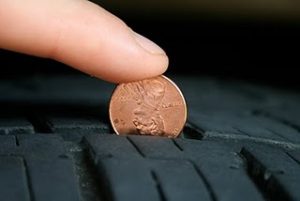
- A penny test.
Take a penny and insert it upside down into one of the tread grooves. If Lincoln’s head is all out, it’s just time to get a new tire/set of tires. - A treadwear.
There are indicators inside a tread groove of any tire, which is usually invisible when the rubber is new. Once you notice that your tread has reached that level, you should buy new tires. - A treadwear gauge.
This is a special instrument that shows you exactly how much rubber you have left.
Unusual Vibration
Unusual vibration can be a result of wheel misalignment, tire imbalance, shock absorbers malfunction, and many other reasons. The damage can be hidden inside the tire, and internal issues may be extremely difficult to detect.
Some vibration is inevitable when you’re driving, but if it becomes too strong or has abnormal patterns, it’s time to check the vehicle and probably buy new tires for car. Even if the problem was initially not with the tire(s), it/they could have been damaged by excessive shaking.
If the initial problem seems to be in the tire, the greatest possibility is that it’s improperly balanced. One of the most noticeable symptoms of the issue is vibration and shaking that becomes worse at higher speeds. Usually, the starting speed at which you can feel the vibration is 45-50 mph, but it depends on the size of the tires, the vehicle, sensitivity of suspension, steering, etc.
Even ¼ of imbalance can cause unusual vibrations, so once you buy new tires for car and mount them, make sure they are perfectly balanced.
Tire Aging Problem Awareness
The problem of rubber aging was firstly addressed back in the 1990s. The first organization to say that there are limits to the operable age was the British Rubber Manufacturers Association (BRMA). In June, 2001, they recommended that drivers shouldn’t mount tires that are 6+ years old, and that all tires had to be replaced after they turn 10 years.
Another organization to bring tire aging awareness was the Japan Automobile Tire Manufacturers Association. In May, 2005, they introduced a practice of inspecting tires annually after 5 years of usage. They also encouraged drivers not to mount tires that are 10 years old or more, and to buy new tires for car even if the old rubber seems to be usable.
Some European tire manufacturers for sport cars, which can travel at high speeds for a long time (like on the German Autobahn), say that a 6-year age is the maximum. Even though there is no German Autobahn in the USA, major companies like Ford Motor Company and General Motors also recommend replacing Original Equipment tires after 6 years.
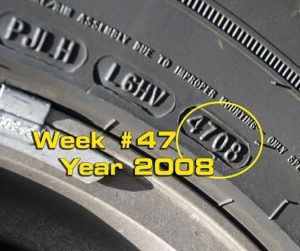
It’s important to remember that Original Equipment items start their service right after the vehicle manufacturer receives them. However, before you buy new tires for car, they can be stored for up to several years in shops, so it’s important that you read the tire date code.
Buy New Tires for Car with Caution
To achieve the best performance of your vehicle, mount the same tires on all wheels. Make them the same size, type (radial, non-radial), load, and speed rating, etc. This can be skipped only if you have a sports car that can have different-sized tires on different axels.
There’s lots of information on tire codes – learn how to read them. Then you will know the age, estimated tread life, manufacturer’s facility, load index, speed rate, and much more. All this will help you buy new tires for car. which will improve fuel usage and vehicle performance.
